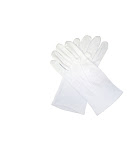Maria's rules were as follows:
1. Acquire a copy of David Foster Wallace's book of short stories 'Oblivion'.
2. Select three stories and read them over three consecutive days, beginning on a Monday (note they vary quite radically in length).
3. Do nothing related to this project for four days.
4. On the next Monday, select just one of the stories that you feel has the most potential as a tool for investigation.
5. Make one piece of work, each day, for each page of the story you have selected. You are free to choose the form and content of this.
6. Re-order the works you have made into a sequence which 'works with' the original story in a way that you consider to address temporal space.
7. Exhibit it.
On reading the rules Maria has sent I was amused by their precision, and thought that they seem engaging and would be interesting to respond to. The structure in terms of the time frame and the initial specificity of what is required is really appealing to me, as for some time since finishing my masters I have been wading about in my work, feeling a bit lost at sea, and also feeling, at the same time, although probably quite unnecessarily, tied to my subject matter. So I am looking forward to approaching making new work within a completely different and very ordered remit, and wondering how much I will end up bending what I do to my current concerns or whether something new and unexpected might come out of it.
I have no preconceived ideas about what form the work might take, but will allow the writing to sink in first. I don’t think at the moment I feel the need to do anything obviously different than what has been asked, so I will start off in that direction and see where it takes me.
If you're interested:
David Foster Wallace was the award winning author of several novels, more than a few short stories, and numerous articles, as well as being a college professor. David has been called one of America's most important young authors and is often compared to Thomas Pynchon, though he tended to shrug off that association. He was most widely known for his epic (1000+ page) novel, Infinite Jest, published in 1996 and critically acclaimed by critics and readers alike. Topics covered in Wallace's work are wide ranging, but he had a special interest in American culture, addictions, and excess. Ironically, because of his edgy body of work and his public persona, DFW gained a cult following and became something of a celebrity himself. He committed suicide in 2008.
The short stories in Oblivion are:
"Mister Squishy"
"The Soul Is Not a Smithy"
"Incarnations of Burned Children"
"Another Pioneer"
"Good Old Neon"
"Philosophy and the Mirror of Nature"
"Oblivion"
"The Suffering Channel"
- Kate







